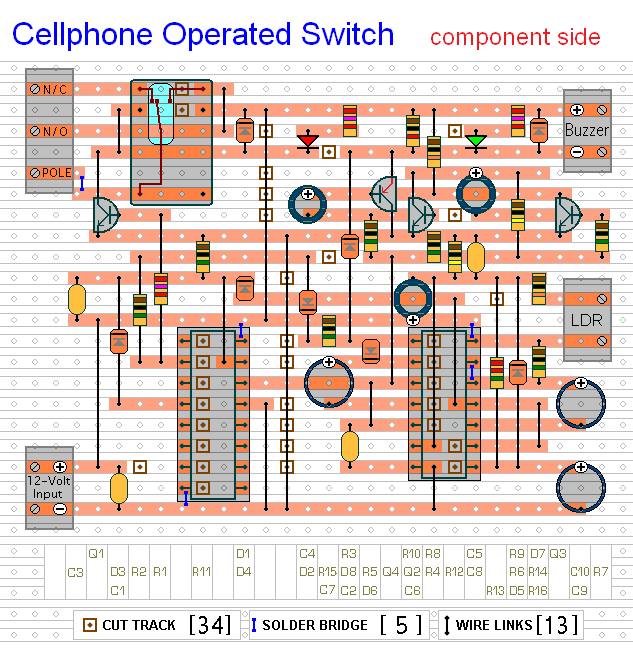I'm obliged to
Aussiemike in Kenya - who suggested that light from a mobile phone's display screen could be used to trigger a switch. When a brief (free) phone call illuminates the display - the light from the display operates a 4017 based
Toggle Switch. And any small push switch - connected in parallel with the LDR - will provide optional manual control.
Schematic Diagram
Click Here For A Photograph Of The Prototype.

Notes
The switch can be operated remotely - from any phone. The call should be kept below about 5 seconds. With the phone's backlight set to turn off 10 seconds after the call ends - the screen will go dark after a maximum of about 15 seconds. This is more than long enough to toggle the switch. And - if you know the state of the relay before the call - you'll know its changed state - after the call.
But lets say you don't know - or you've forgotten - the current state of the relay. Then what? The solution is to begin by resetting the circuit. If you extend the length of the call to at least 30 seconds - the 4017 will reset. The state of the relay before the extended call - doesn't matter. After the extended call - it will be de-energized. And the next (short) call will cause it to energize.
This switch will have many uses. And not all of them will involve distance. So I've included a number of signals - to indicate the changing state of the relay. When the relay energizes - the red LED lights - the green LED flashes twice - and the Buzzer gives two short beeps. When the relay de-energizes - the red LED turns off - the green LED flashes four times - and the Buzzer gives four short beeps.
The LEDs and Buzzer are not necessary to the operation of the circuit. You can leave them out if you wish - together with their associated components. That is - you can leave out all of the components - coloured purple in the schematic diagram.
The
Support Material includes a detailed circuit description - a parts list - a step-by-step guide to construction - and more. I used a single pole relay in the prototype - but you can use a mult-ipole relay if it suits your application.
Veroboard Layout
Click Here For A Photograph Of The Prototype.
